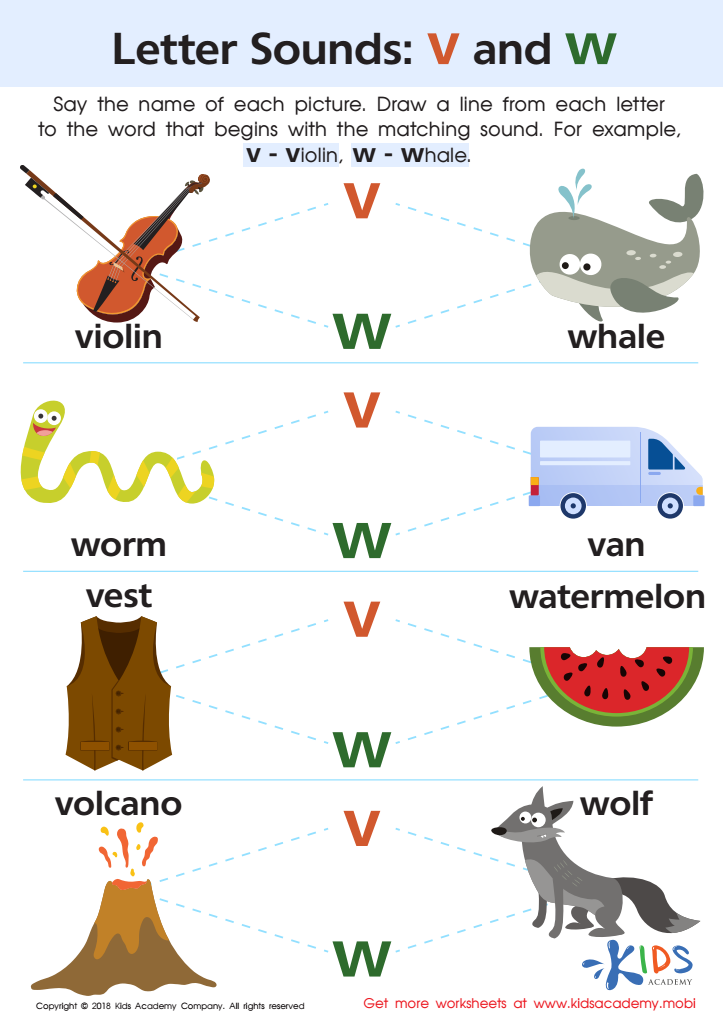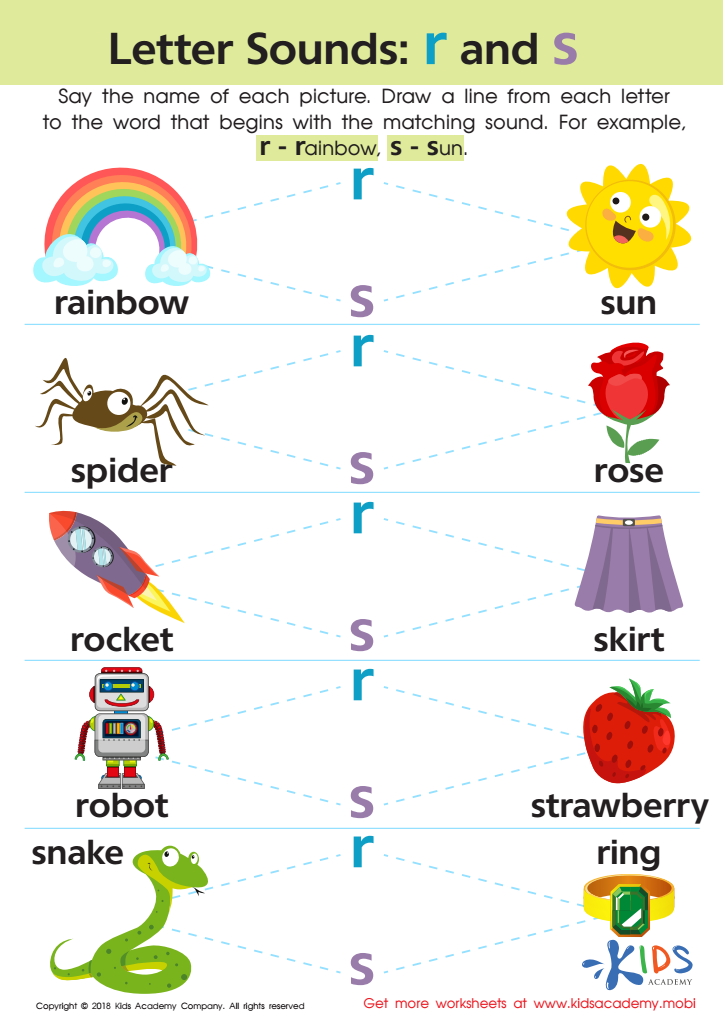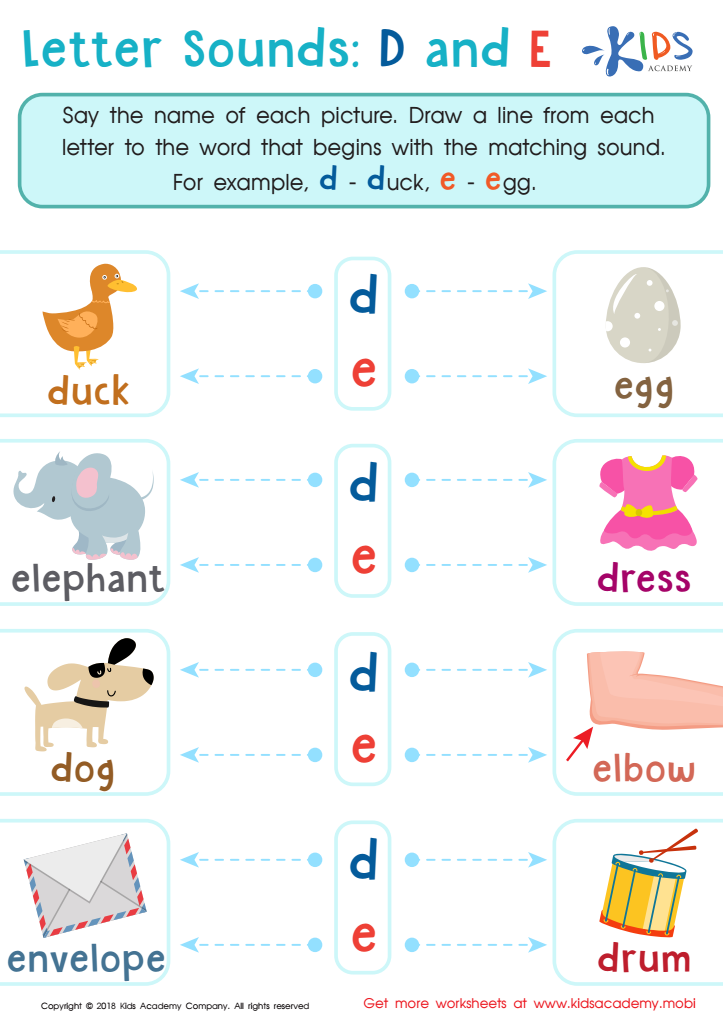Handwriting practice Normal Phonics Worksheets for Ages 5-8
4 filtered results
-
From - To
Enhance your child’s handwriting skills with our engaging Handwriting Practice Normal Phonics Worksheets, specifically designed for ages 5-8. These worksheets integrate phonics fundamentals to make writing fun and effective. Children will develop fine motor skills while practicing letter formation, phonetic sounds, and blending activities. Our carefully curated exercises encourage young learners to improve their handwriting through repetition, alongside interactive phonics learning methods. Perfect for home or classroom use, these worksheets foster an enjoyable learning environment, promoting literacy and confidence as your child masters essential writing skills. Download and start your child's writing journey today!


Letter P Sound Worksheet


Letter V and W Sounds Worksheet


Letter R and S Sounds Worksheet


Letter D and E Sounds Worksheet
Handwriting practice, particularly through Normal Phonics, is crucial for children aged 5-8 for several compelling reasons. Firstly, handwriting involves fine motor skills that enhance hand-eye coordination, benefiting overall physical development. As children practice forming letters, they strengthen the small muscles in their hands, which is essential for later writing tasks and creative expression.
Additionally, the Normal Phonics approach incorporates sound-letter recognition, linking phonetic sounds to their corresponding letters. This connection supports literacy development, as children learn to decode and spell words efficiently. Improved handwriting directly impacts reading fluency, helping children translate written language more effectively.
Moreover, handwriting practice doesn’t just cultivate technical skills; it fosters confidence and independence. As children see their written works improving, they are more likely to engage actively in reading and writing activities, building a positive association with literacy.
Lastly, structured handwriting practice prepares students for academic success. As they move through grades, neatly written work is often valued in classroom settings and affects their grades and evaluations. Teachers and parents should prioritize handwriting and Normal Phonics to lay a strong foundation for literacy, boost confidence, and set children on a successful educational pathway.

 Assign to My Students
Assign to My Students



















